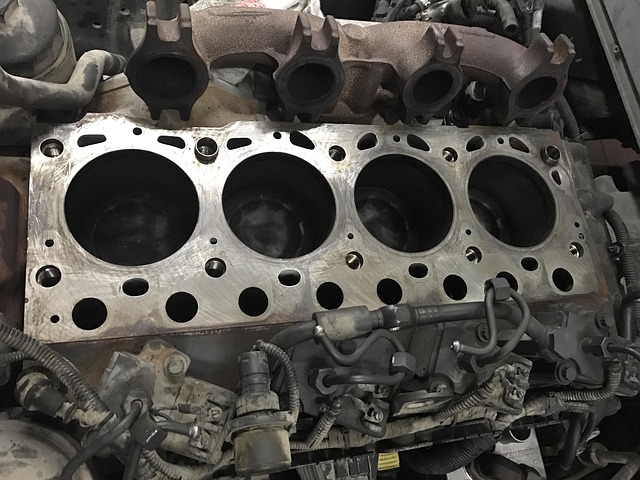Register Car: Step-by-Step Guide to DMV VIN Verification
Looking to register your car in California? This comprehensive guide walks you through every step, from understanding key requirements to completing the DMV VIN verification process. First, grasp what…….

Looking to register your car in California? This comprehensive guide walks you through every step, from understanding key requirements to completing the DMV VIN verification process. First, grasp what’s needed for registration. Next, gather all necessary documents. Then, perform the crucial DMV VIN verification and finalize the title transfer. Conclude with paying registration fees to ensure your vehicle is legally registered in California.
- Understand Requirements for Registration
- Gather Necessary Documents
- Perform DMV VIN Verification
- Complete Title Transfer Process
- Pay Registration Fees and Register Vehicle
Understand Requirements for Registration

Before registering your car in California, it’s crucial to understand the requirements for registration. The California Department of Motor Vehicles (DMV) mandates several steps, including a thorough inspection of your vehicle and verification of its unique identification number (VIN). This process ensures that all vehicles on California roads meet safety standards.
One essential step is to have a reliable VIN verification done. You can opt for a mobile vin verifier or conduct a mobile vin inspection to get this crucial information quickly and accurately. The DMV will cross-check the provided VIN details with their records, so ensuring your vehicle’s history is clean and up-to-date is vital. This step helps prevent fraud and ensures that you’re complying with all legal requirements for car registration in California.
Gather Necessary Documents

Before you begin the registration process, it’s crucial to gather all the essential documents required by the California Department of Motor Vehicles (DMV). This includes your vehicle’s registration certificate from the previous state, a valid driver’s license, proof of insurance, and a completed DMV Form 46, which is the Application for Title and Registration. One important step in this process is the DMV VIN verification, ensuring that your vehicle’s unique identifier matches the information on record.
For a streamlined experience, consider using a mobile vin verifier or undergoing a mobile vin inspection. These services can assist in gathering the necessary data quickly and accurately. By having all your documents ready and understanding these requirements, you’ll be well-prepared to navigate the car registration process in California efficiently.
Perform DMV VIN Verification

Before registering your car in California, it’s crucial to undergo a DMV VIN (Vehicle Identification Number) verification process. This step ensures that your vehicle meets all necessary safety and legal standards for operation within the state. The process involves providing your vehicle’s details to the Department of Motor Vehicles (DMV), including the VIN, which acts as a unique fingerprint for your car. A mobile vin verifier or even a simple vin inspection can help you gather this information accurately and conveniently.
During the verification, the DMV cross-references your VIN with their records to confirm that the vehicle’s description, ownership history, and documentation are all in order. This step is vital to prevent fraud and ensure the safety of California’s roads. By completing the DMV VIN verification, you’re one step closer to legally registering your car and hitting the streets as a proud California driver.
Complete Title Transfer Process

To complete the title transfer process in California, you’ll need to follow a few key steps after acquiring the vehicle. Start by scheduling a DMV (Department of Motor Vehicles) vin verification, which is crucial for confirming ownership and the vehicle’s history. This step ensures that all records match and helps prevent fraud. You can typically do this online or at your local DMV office.
Once your vin inspection is complete and passed, gather all necessary documents, including the title, registration, proof of insurance, and a valid driver’s license. Then, visit a California DMV location to officially transfer the title. If you prefer a more convenient option, consider using mobile vin verification services that can perform the required checks on-site or at your home, making the process even smoother.
Pay Registration Fees and Register Vehicle

After completing the required paperwork and gathering all necessary documents, the next step in registering your car in California is to pay the registration fees. These fees vary based on the type of vehicle and its age. You can typically make the payment online through the California DMV website or at a local DMV field office. Once you’ve paid, it’s time to proceed with the vehicle registration process.
To ensure a smooth registration process, consider utilizing a mobile vin inspection or mobile vin verification service. These services allow for convenient and accurate verification of your vehicle’s identity using the unique 17-character Vehicle Identification Number (VIN). A mobile vin verifier can check the VIN against the California DMV database to confirm the vehicle’s history, including any previous owners, accidents, or outstanding issues, thereby saving you time and effort.
Registering a car in California involves several straightforward steps, from understanding the necessary requirements to completing the official title transfer process. Ensure you gather all essential documents, including proof of ownership and identification. A crucial step is the DMV VIN verification, which ensures your vehicle’s authenticity. Once these tasks are accomplished, pay the registration fees, and your vehicle will be officially registered, allowing you to hit the road with peace of mind.







